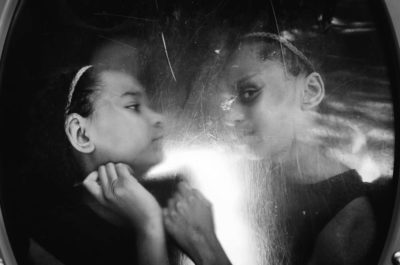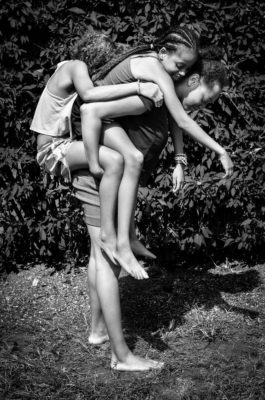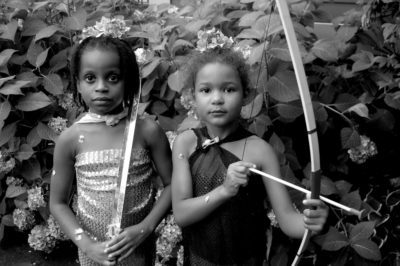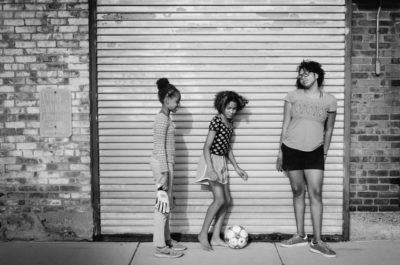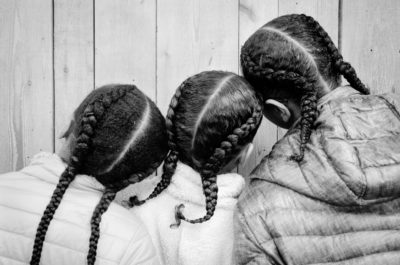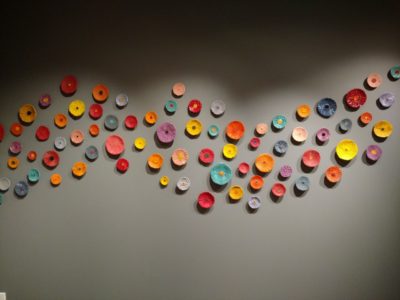Family Circle
Family history is marked by traditions, rituals, and stories. What remains to be passed down becomes the documentation of a family, preserving a sense of continuity. Traditions link generations of the past with the present. Stories families tell recreate journeys, blur the line between fact and memory, embellish mysteries, and help us to understand how we identify our own roles within a family.
Each of the artists in this exhibition have chosen to explore the idea of family—at times directly, sometimes in the abstract. Each were extracting memories to create their work, and each weave complex narratives. These artists are telling us a part of their family story, giving a glimpse of their family circle, whether it be through parents, children, cousins, or friends. They are methodically sorting through family history, doing both physical and mental detective work, and the result is an exploration of relationships with others and a discovery of the self.
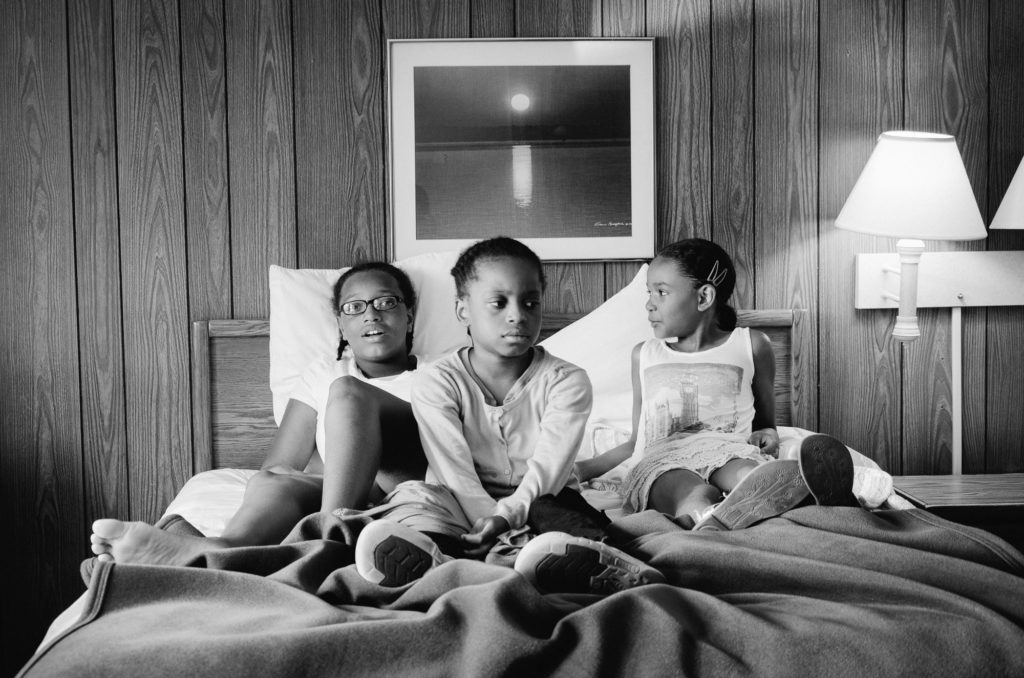
Competition (Clinton Motel) , 2016, Archival Inkjet Print
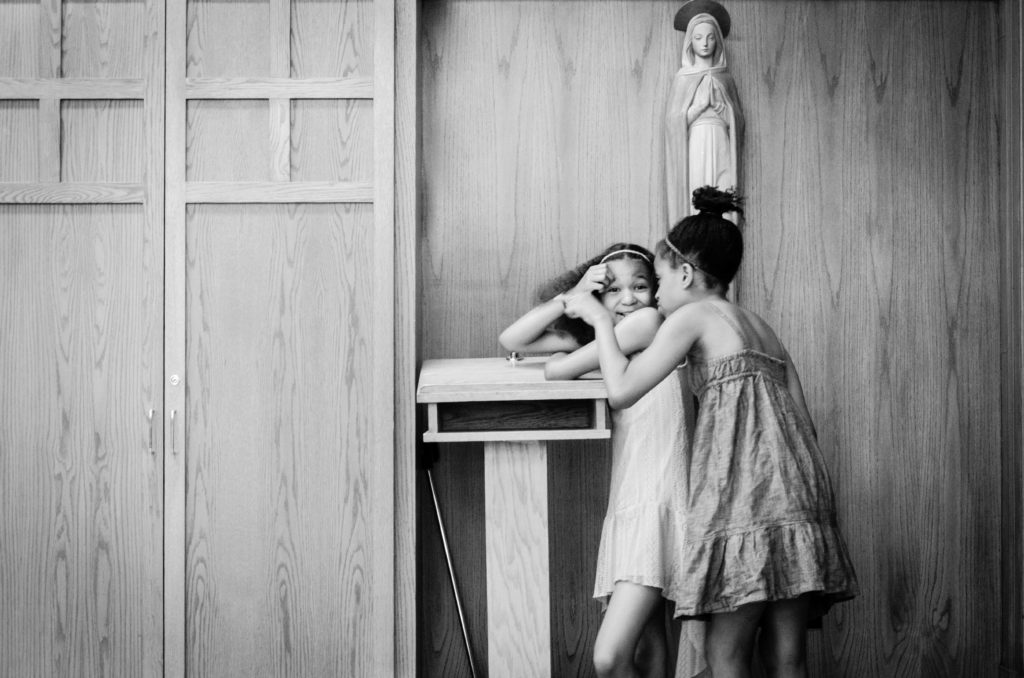
Mother Mary , 2016, Archival Inkjet Print

Plexiglass , 2017, Archival Inkjet Print

Piggyback , 2017, Archival Inkjet Print

Brick , 2018, Archival Inkjet Print
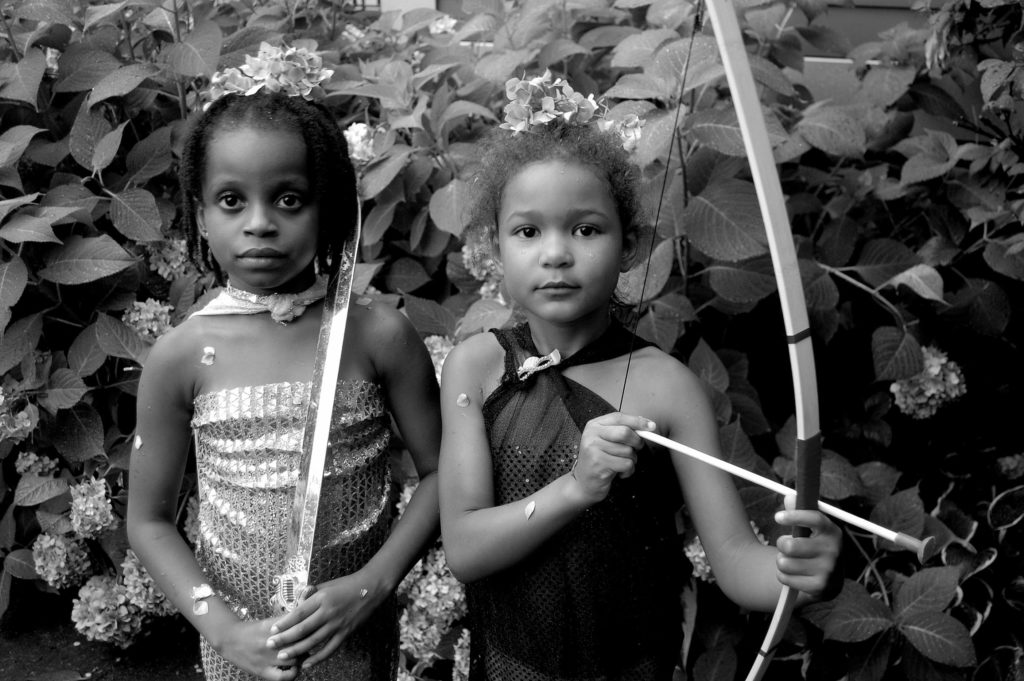
Swords , 2016, Archival Inkjet Print

Soccer Ball , 2017, Archival Inkjet Print
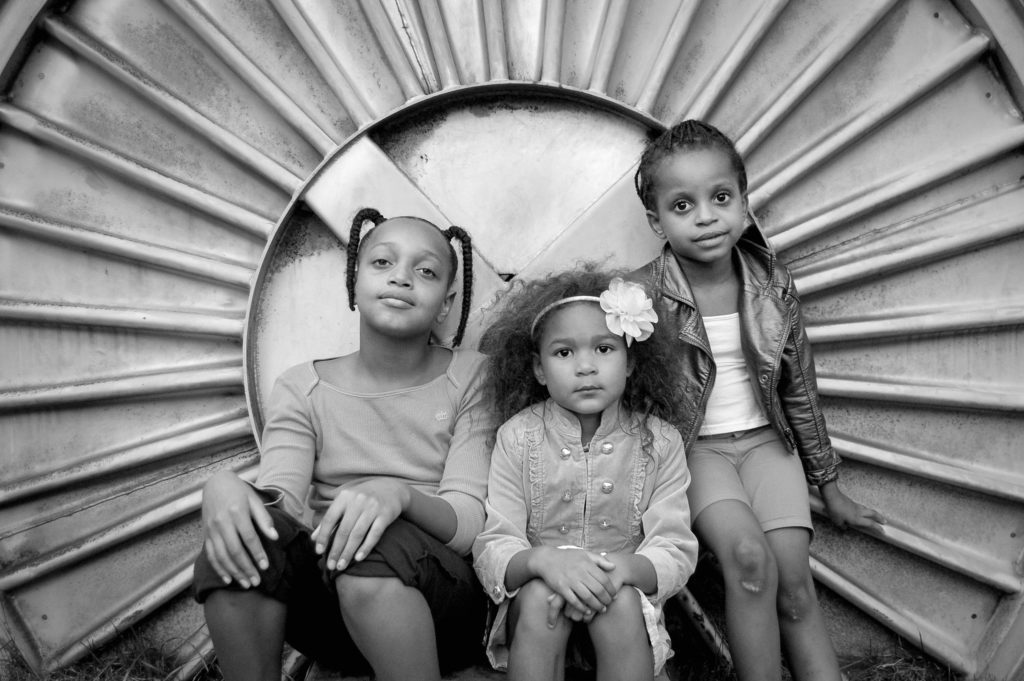
Flower , 2015, Archival Inkjet Print

Braids , 2019, Archival Inkjet Print

Dad’s Garden , 2019, Hand-built carved stoneware clay, underglaze, clear glaze
A panorama is defined as an unbroken wide view. Lee Kilpatrick has chosen to work in a panoramic format where family stories and gatherings, whether friendly or unsettled, are pieced together lengthwise to create a visual narrative. While not a seamless view, each artist presents their work in a way that places the viewer within their experiences. By inserting us into private gatherings where the subjects more often than not do not appear to be cognizant of the camera, Kilpatrick breaks the fourth wall, making the viewer a part of the scene. The notion of “the company we keep” is evident in Lee Kilpatrick’s work, carefully constructed panoramas that document gatherings of family and friends. The titles of the works give the viewer just a brief sense of the reason that people have come together, and small clues within each work give hints of the group dynamic. The familiarity of dinners like Ronna’s Birthday and Kitty’s Last Supper, the spirited discussion in Foley’s, After the Opening, the tension in Easter Dinner, and the absent-minded behaviors we partake in when we think no one is watching in Watching the Olympics—all of these scenarios are relatable to our own lives.
Growth, continuity, and close family relationships are the focus of Kristen Joy Emack’s series Cousins, a project that is deeply immersed in the poetics of childhood and adolescence. Emack has been documenting her daughter and two nieces growing up together, capturing their everyday moments or as she says, “the brilliance of their communion and kinship.” As the artist grew with her subjects, she came to realize that Cousins was also a series about representation, and whose lives we are most accustomed to seeing pictured. Emack notes that as her daughter and nieces have matured, “they have begun to understand that the lives of Black girls are not well-documented, and agree that one added intention of this series is to bring forward that perspective.” As we move from image to image, we see three young women growing up and coming into their own—as individuals and as a family—from the shy smiles in Swords, to self-possessed command of their space in Sisters, to a trio of kinship that carries from Piggyback, to Braids, to Flower.
Mary Morazzi-Henderson treats objects as both heirlooms and symbols, creating work that pays homage to family and friends through visual associations. Her father is represented through his garden, her mother through bingo tiles—all painstakingly recreated in ceramics. Numbers and letters referenced in the works on view symbolize years and days significant in her relationship with her parents. The meditative process of creating the works by hand reminded Morazzi-Henderson of making handmade pasta with her mother, and the shapes of her works—often amorphous pieces that seem to fit together—are reminiscent of the bonds of family and friends. Using an object to tell her stories is what makes the artist’s work both accessible and intimate.
Check out the artist’s websites:









